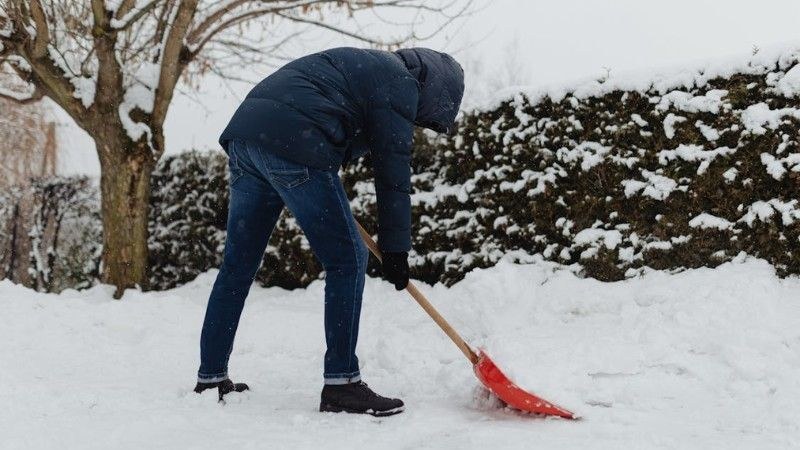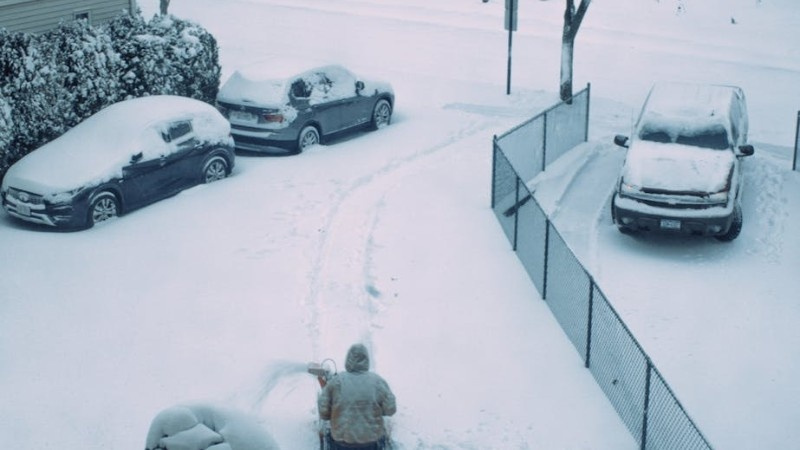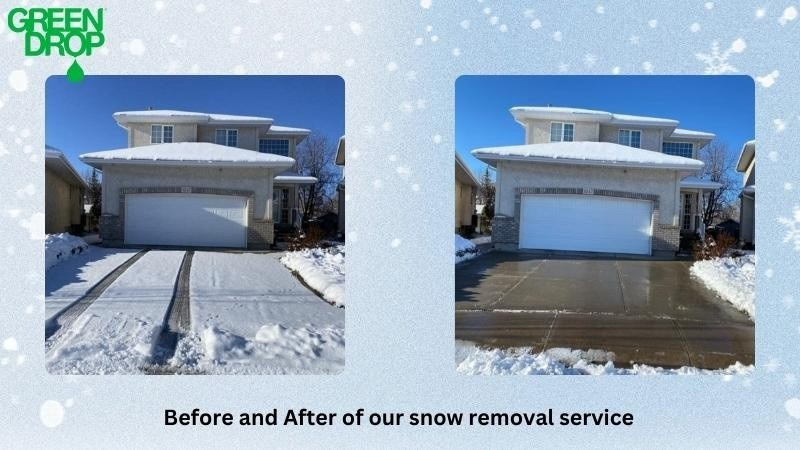Snow Shovelling After 45: The Risks No One Talks About
Reading time: 5 - minutesYou’ve been shovelling snow all your life. It’s no different now that you’re 45 years young, right?
Well…
Each year, thousands of Canadians end up in emergency rooms because of it. A study found that heavy snowfalls (over 20 cm) were linked to a 16% increase in heart-attack admissions and a 34% increase in deaths among men the following day.

There’s also the relatively smaller risks like muscle strain, joint injuries, and slips, and shovelling can be far more dangerous than most realize.
So why does it get riskier after 45, and what can you do to protect yourself this winter?
Why Snow Shovelling Gets Riskier After 45
As we age, the body’s tolerance for intense, sudden exertion declines. Shovelling may seem like moderate exercise, but it’s closer to sprinting uphill in freezing temperatures.
- Cardiovascular strain: Blood vessels stiffen with age, making it harder for the heart to deliver oxygen. The cold constricts arteries, which spikes blood pressure and heart rate, both major risk factors for cardiac events.
- Reduced muscle mass: After 40, we lose roughly 3–8% of muscle per decade. That means heavier loads place more stress on weakened back, shoulder, and leg muscles.
- Joint wear and tear: Decades of micro-trauma accumulate. Knees, hips, and lower backs become more vulnerable to twisting and lifting injuries.
- Hidden conditions: Many adults over 45 have undiagnosed hypertension or coronary artery disease. Sudden shovelling exertion can trigger a heart attack even in those who feel “healthy.”
- Thermal shock: Cold weather narrows blood vessels and reduces oxygen delivery, forcing the heart to work harder.
The Most Common Injuries Caused by Snow Shovelling
While cardiac events are the most serious, they’re far from the only concern. Snow shovelling is responsible for over 11,000 emergency-room visits annually in North America, many involving musculoskeletal injuries.
1. Heart Attacks and Cardiac Events
The combination of exertion and cold exposure makes snow shovelling a “perfect storm” for heart strain. Even short bursts of heavy lifting can increase cardiac workload by more than 75%. Symptoms like chest tightness, arm pain, or light-headedness require immediate medical attention.
2. Back and Spinal Injuries
Improper technique, like twisting while lifting or bending from the waist, can cause disc herniation or chronic back pain. 31% Canadians experience bank and joint pain from shovelling.
3. Shoulder and Rotator Cuff Damage
Repetitive lifting and overreaching motions stress shoulder tendons. Rotator cuff tears are especially common among middle-aged adults unaccustomed to manual labour.
4. Falls on Ice
A Canadian injury report found that adults aged 45–64 are among the most frequent victims of slip-and-fall injuries on snow or ice. A single misstep can lead to fractures or concussions that take months to heal.
5. Cold-Related Illness
Hypothermia and frostbite can develop quickly when shovelling for long periods in wet or windy conditions. Out of the 9,425 cold-related hospitalizations in Canada from 2011 to 2023, over 60% were for people over 45 years of age.
How to Shovel Safely (If You Must)
If you’re healthy enough to shovel, treat it like exercise.
- Shovel in stages: Don’t wait for the storm to end. Clearing every few hours keeps the snow light and reduces strain.
- Use the right tool: A curved, lightweight shovel lets you push rather than lift, reducing back load.
- Push, don’t throw: Whenever possible, push snow to the side instead of tossing it.
- Bend your knees: Keep your spine neutral and lift with your legs. Avoid twisting at the waist.
- Stay hydrated: Cold air is dehydrating, which thickens blood and increases heart strain.
- Dress in layers: Wear breathable, moisture-wicking layers and insulated gloves.
- Take breaks early and often: Stop before fatigue sets in. Most snow-shovelling heart attacks happen early.
How Often Should You Take Breaks?
The right rhythm is 10–15 minutes of work, followed by 3–5 minutes of rest. Short, consistent breaks prevent spikes in heart rate and give muscles a chance to recover.
If the snow is heavy or wet, cut those intervals in half.
If you feel shortness of breath, dizziness, or chest pressure, it’s time to stop. Never rush to “finish” the job; pace is what keeps you safe.
Should You Stretch or Warm Up Before Shovelling?
Absolutely. Shovelling engages every major muscle group, and jumping straight into it cold is a recipe for strain.
- Start with 2–3 minutes of light movement: marching in place, arm circles, and gentle squats.
- Follow with dynamic stretches: torso twists, hip openers, and shoulder rolls.
- Avoid static stretching in freezing weather: cold muscles don’t respond well.
What Can You Do Instead of Shovelling?

Sometimes the best prevention is not doing it yourself. Here’s how to stay safe and still keep your driveway clear:
- Hire a professional snow-removal service. Trained crews use equipment and techniques designed to protect both your property and your health.
- Use snow blowers carefully. While less physically demanding, they still require caution, as overexertion and slips can still occur.
- Ask for help. Community programs, neighbours, or family can assist those with health risks.
- Pre-treat driveways. Apply eco-friendly de-icers before snowfall to prevent compaction and make removal easier.
- Invest in convenience. Heated driveway mats or seasonal removal plans take the strain off entirely.
When to Call for Help
If you experience any of the following, stop immediately and seek medical assistance:
- Chest pain, tightness, or discomfort spreading to the arm, neck, or jaw.
- Dizziness, fainting, or unusual fatigue.
- Shortness of breath or nausea.
- Sudden weakness or numbness in limbs.
- Rapid or irregular heartbeat.
Why Choosing Professional Snow Removal Makes Sense

The older we get, the more snow shovelling becomes less about stamina and more about risk management. That’s where professionals step in.
Green Drop’s snow removal services keep driveways, walkways, and steps clear without you lifting a shovel.
- Insured crews trained to handle icy conditions.
- Automatic dispatch within 24 hours of snowfall.
- Turf-safe, pet-friendly products to protect your property.
For homeowners in Edmonton, Calgary, Red Deer, Regina, and Saskatoon, Green Drop offers peace of mind and a winter free of strain, slips, and heart risks.

